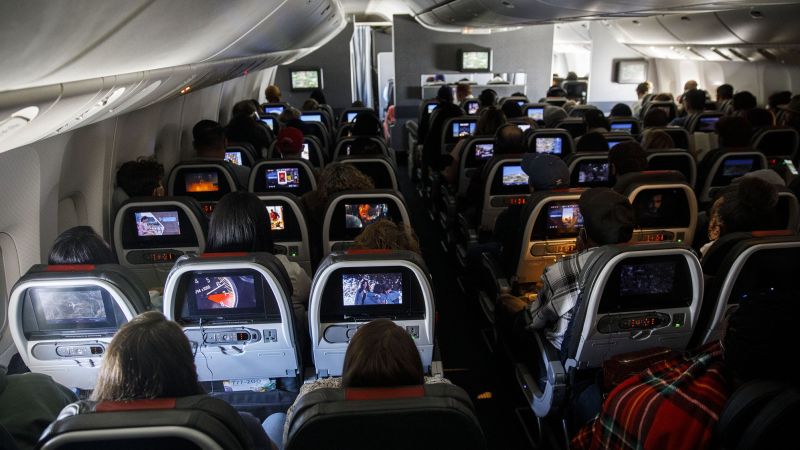Naturally, pre-planned survival techniques are some of the best for long-distance travel. You should first be aware to examine trip details and access offers that are exclusive to mobile devices. If your seat isn’t going to be in a first-class, lie-flat seat, you’ll pick it carefully, dress comfortably, and plan your sleep schedule. Have a relaxing flight and pack your things!
1. Choose comfortable clothing for a restful sleep
When I arrange my clothing for an extended flight, I consider both the weather at my destination and the aircraft. In either case, I’m best buddies with several light layers. Since I’m always cold when flying, I prefer to wear layers topped with a thin-down vest that, if I’m going somewhere warm, I can crush into nothing. I store the vest in my suitcase as a travel pillow.
While many individuals enjoy packing a travel pillow, I dislike lugging about an extra thing. (If you feel the same way but are compelled to have a pillow, consider one of the many inflatable travel pillows currently available.) I also always pack a lightweight alpaca scarf for warmth on my travels. In the evenings, if I need an extra layer, it still looks sophisticated and is the ideal blanket for traveling. Choose slip-on shoes over slippers or grippy socks while traveling; they’re convenient for security checks and easy to take off on the aircraft.
2. Place your seatbelt on top of your blanket
I discovered the hard way that if flight attendants are overly enthusiastic about checking if your seatbelt is secured, they may wake you up. If you can sleep through turbulence and the flight attendants come around, you can buckle your seatbelt over your blanket or layers of clothing, and they won’t disturb you.
3. Advice for long-haul travelers who intend to continue packing
My father, who was a travel enthusiast, used to have a rule: no checking bags. Even when I go on a week-long trip, it is still how I travel. This suggestion might save your sanity when you get there, even though it won’t necessarily make your flight more comfortable. I design a capsule collection just for travel, using one kind of neutral color as the foundation for my outfit—for example, navy, black, or brown. Instead of mixing the neutrals, I’ll add color on top. For example, all the other clothes I bring must go well with black if the base color is black. You’ll be surprised at how little you need on a trip if you pack in this manner.
4. Bring snacks
You may receive a meal when you’re not hungry and may go for hours without food because flight attendants typically plan meals to coincide with your destination when you’re traveling across time zones. On flights, I normally pack a little snack, such as almonds or granola bars, just in case. (It’s beneficial for all of us when I give him some nibbles because I travel with someone who gets “hangry.”) I adore salty snacks like pretzels, but while I’m flying, I try to avoid consuming them to prevent edema and dehydration.
5. Choose the best seat possible
The front bulkhead seats and the exit rows are the economy seats on wide-body aircraft with the largest capacity. This is the finest option for tall people. However, bear in mind that bassinets are placed against the bulkhead wall by airlines, so if you can’t stand wailing infants, this might not be the place for you. Additionally, bear in mind that some people may find it uncomfortable because the TV on your seat is probably going to be stored in your armrest. Since most jet engines are placed behind the wings, the catch-22 is that the actual airplane noise decreases with increasing front-row seat position. Consider selecting a seat in the back if you don’t require the additional legroom. It may be advantageous if your flight isn’t full because most people dislike sitting in the rear row. Try, nonetheless, to get a few seats above the restrooms.
6. Avoid jet lag
You’re not alone if you’ve ever noticed that your jet lag is worse when traveling eastward than when traveling west. Research indicates that traveling east causes the body’s circadian rhythms to become more erratic. Your body will suffer if you are traveling across multiple time zones, regardless of the method. Planning a flight that arrives during the day or modifying your sleep schedule slightly in advance are two ways to get ready for a trip. Taking a redeye is a great option if you can get a good night’s sleep on an aircraft. Your general level of sleep will improve with how quickly you can acclimate to the time zone of your destination.
7. Carry a necessary item
On a lengthy flight, I usually wear wireless earbuds. Not because of the excellent sound quality, but rather because I pack big, noise-canceling headphones. The talkative people on the plane always gravitate toward me for some reason, and years ago I discovered that if I put on my enormous headphones as soon as I sit down, even if they aren’t connected to anything, my fellow travelers will assume I’m really busy. There’s no reason for conflict.
8. Stick to your beauty sleep
Instead of sleeping whenever I feel like it, I attempt to schedule my naps according to the time zone of my destination. Most long-haul flights will have meals served in sync with the destination, so you won’t have to do much work to figure this out. First-class lie-flat seats are more comfortable for sleeping on, but if you’re saving money by booking your long-haul flight in the main cabin, you can reserve a window seat on the side of the aircraft that you typically sleep on.
9. Exercise tips for a long flight
Yeah, I’m the one doing ankle rolls and strolling around the aisles in the middle of the night. Deep vein thrombosis (DVT) is a blood clot that usually forms in a leg vein and can be extremely painful, or even fatal if a piece breaks off and travels to your heart and lungs. It can be caused by prolonged sitting, dehydration, preexisting medical conditions, cramped seating, and other factors. When flying, I never travel without medical-grade compression stockings. Additionally, it’s generally a good idea to move around to avoid the aches and pains that come with prolonged sitting. Make up a quick circuit of stretches or workouts to perform while traveling.
10. Keeps a charge
It’s important to make sure your electronics stay charged if you’re taking them on an extended travel. In addition to having outlets and USB ports in their premium cabins on most US airlines, some larger aircraft also have them in economy, or the first few rows of economy plus seats. Having a portable charger for tiny gadgets with you is always a good idea. Additionally, lowering the brightness and shutting off apps might extend the life of your device’s battery if you’re using one and discover that your seat doesn’t have an outlet or that it isn’t working, which happens.

